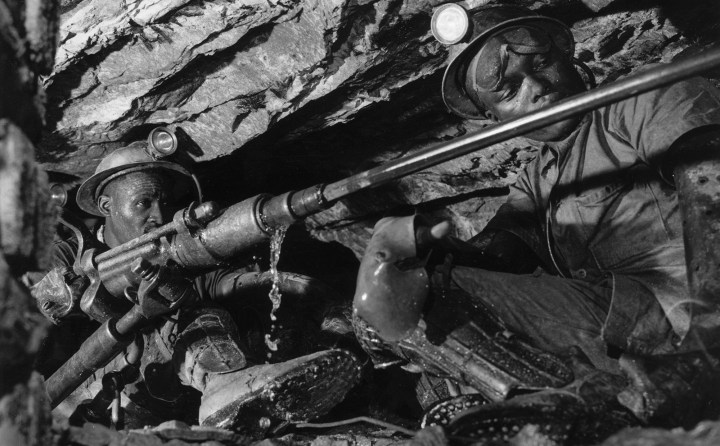AFTER THE BELL
SA’s history is just one damned thing after another — or not

About half a million people still work in the mining industry in SA, and many are still migrants. The Minerals Council SA estimates that the sector’s almost 460,000 direct jobs support about 4.5 million dependants. So, where are we now? Do we celebrate the sunset of the migrant labour system?
He didn’t coin the phrase, but historian Arnold J Toynbee is often associated with the saying, “History is just one damned thing after another.”
Actually, Toynbee was deeply critical of the idea that history was without rhyme or reason and only quoted the phrase to criticise it. Toynbee’s alternative was a kind of rising-and-declining-nations thesis, driven by spiritual thirst — an idea that led him into some thick undergrowth.
So although Toynbee, at one point very influential, has not endured, the rather amusing put-down of history and historians has. I suspect this is because events and facts remain the inevitable foundation of any historical analysis. Toynbee’s more or less contemporary, poet Max Plowman, was also critical of people who “worship” facts.
“In return, the facts hit them like hailstones,” he wrote, adding that in these cases: “Truth becomes an endless succession of stepping-stones that have a way of disappearing into the bog as soon as they are passed over.”
Like all history of conflicts, South Africa’s history is heavily contested. And yet it is also made up of facts. Funny, that. And like all histories, not only does the history itself change but perceptions of that history change too. It’s difficult to assess the rights and wrongs of history if you don’t live in the period, and yet, to avoid doing so seems to shirk at least our present morality.
Perhaps unfairly, I consider labour migrancy to have been an absolute curse on SA and a historical period to be reviled. Migration split up families, reduced once-functional cultures to gradual impoverishment, distorted national and regional politics, served only elites, and reduced its participants to something akin to slavery.
Visit Daily Maverick’s home page for more news, analysis and investigations
Yet, there are also facts to consider. Without mining, SA’s historical development might well have been stunted. And because mines are inconveniently located where the ore-bearing rock happens to be, labour migrancy is often a necessity if the value embedded in the rock is to be realised. Sending young men from rural areas to the mines was initially resisted. But gradually it was embraced, not only in SA but all over the continent, and the money sent home became a crucial component of rural economies.
Historians say migrancy in SA was politically manipulated through the confinement of black South Africans to sub-economic land areas and I have no doubt this is true. But migrants arrived on SA’s goldfields from countries all over the subcontinent. Those damn facts do get in the way.
The reason I’m raising this thorny issue is that my colleagues Ed Stoddard and Felix Dlangamandla have just returned from a trip to some places where the proportion of migrant labourers was high and they filed reports about the situation, here and here.
They make for riveting reading and leave you with an odd ambivalence about the institution of migrant labour. It’s that odd situation where you regret anyone had to go through this, but now that they don’t or aren’t, you have to wonder whether the alternative is that much better.
And there are those pesky facts. The most dramatic is the huge drop in foreign migrants working in SA’s mines. At one time, SA’s vast mining migrant labour system employed almost 500,000 foreign workers. That number now stands at 35,000. This decline is matched by the decline of SA’s gold mines, which in 1987, when South Africa was still the world’s top bullion producer, employed 554,000 people. By 2021, that number stood at 94,000, and SA is now barely a top 10 global gold producer.
And yet, about half a million people still work in the mining industry in SA, and many are still migrants. The Minerals Council SA estimates that the sector’s almost 460,000 direct jobs support about 4.5 million dependants.
So, where are we now? Do we celebrate the sunset of the migrant labour system? New mines do tend to focus on the “host community”. Impala Platinum’s recruitment policy for the past 15 years has been within a 60km radius of its operations, Stoddard and Dlangamandla report.
Yet often, host communities, in towns on the Reef, for example, would prefer not to work in the mines, although the lack of alternative employment opportunities leaves many with little choice. This is all confused by the high level of voluntary immigration into SA which has boosted other industries but become a tendentious social and political issue.
One negative consequence of the sunset of migrant labour is visible in the rise of zama zama mining. The skills base built up over years is not easily relinquished. And other forms of criminality are also evident, like rhino poaching. But on the positive side, the decline of labour migrancy means many miners are no longer effectively supporting dual households, and that has possibly played a role in reducing labour militancy.
One of the irritating aspects of history is that it’s tricky to change — well, most of it anyway. Migrant labour happened in SA, and it is now declining. Those are facts. And I for one celebrate the latter. DM/BM



















Comments - Please login in order to comment.